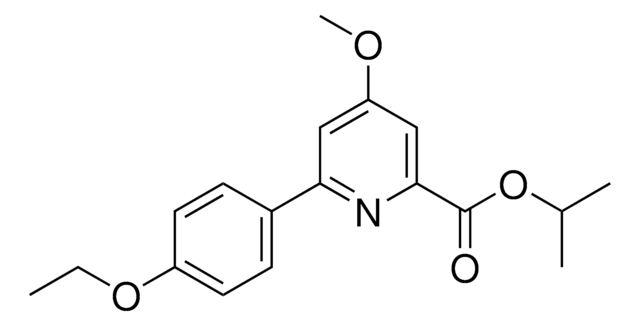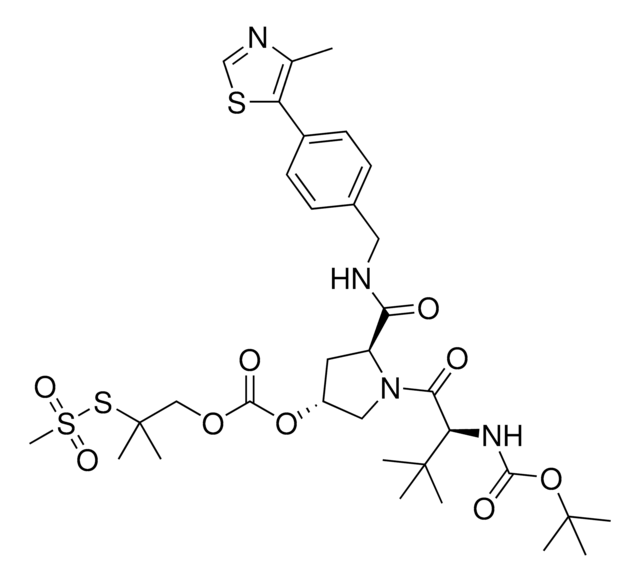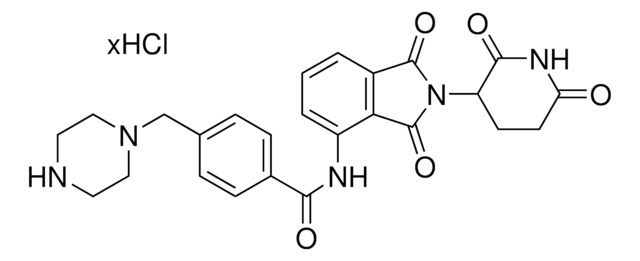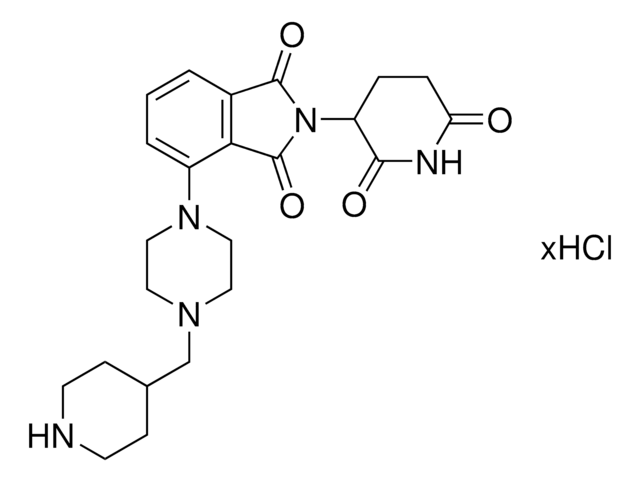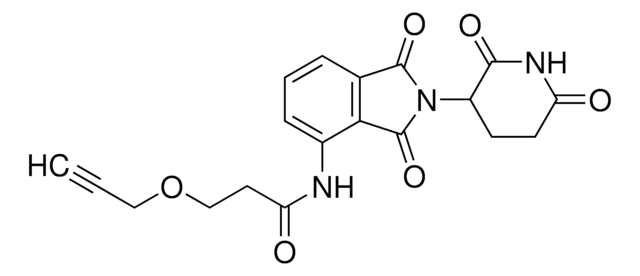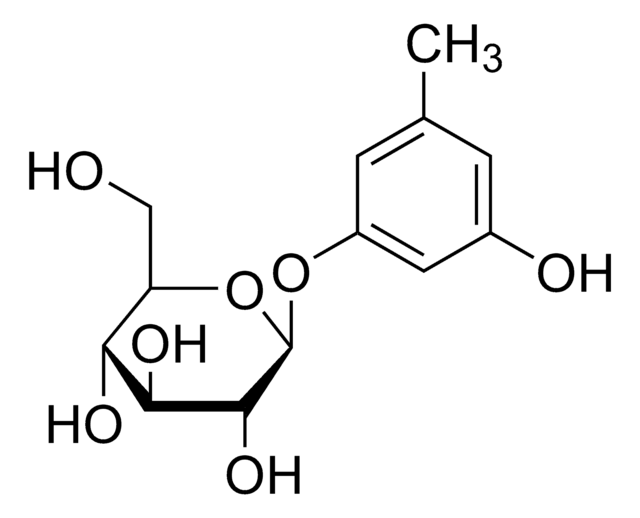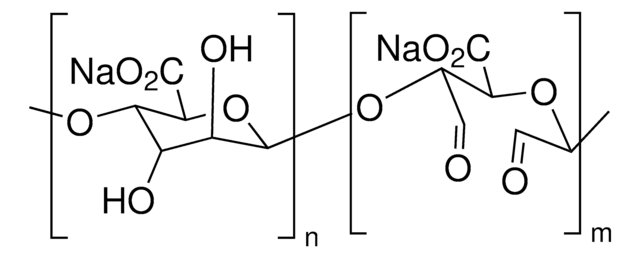927678
Pomalidomide-difluoroPEG1-C4-piperazine Hydrochloride
≥95%
Synonym(e):
2-(2,2-Difluoro-3-(4-(piperazin-1-yl)butoxy)propoxy)-N-(2-(2,6-dioxopiperidin-3-yl)-1,3-dioxoisoindolin-4-yl)acetamide hydrochloride
About This Item
Empfohlene Produkte
Qualitätsniveau
Assay
≥95%
Form
powder
Lagertemp.
2-8°C
SMILES String
O=C(C(CC1)N(C2=O)C(C3=C2C=CC=C3NC(COCC(F)(F)COCCCCN4CCNCC4)=O)=O)NC1=O.Cl
Verwandte Kategorien
Anwendung
Targeted Protein Degradation
Signalwort
Danger
H-Sätze
Gefahreneinstufungen
Repr. 1B
Lagerklassenschlüssel
6.1C - Combustible, acute toxic Cat.3 / toxic compounds or compounds which causing chronic effects
WGK
WGK 3
Flammpunkt (°F)
Not applicable
Flammpunkt (°C)
Not applicable
Analysenzertifikate (COA)
Suchen Sie nach Analysenzertifikate (COA), indem Sie die Lot-/Chargennummer des Produkts eingeben. Lot- und Chargennummern sind auf dem Produktetikett hinter den Wörtern ‘Lot’ oder ‘Batch’ (Lot oder Charge) zu finden.
Besitzen Sie dieses Produkt bereits?
In der Dokumentenbibliothek finden Sie die Dokumentation zu den Produkten, die Sie kürzlich erworben haben.
Unser Team von Wissenschaftlern verfügt über Erfahrung in allen Forschungsbereichen einschließlich Life Science, Materialwissenschaften, chemischer Synthese, Chromatographie, Analytik und vielen mehr..
Setzen Sie sich mit dem technischen Dienst in Verbindung.
